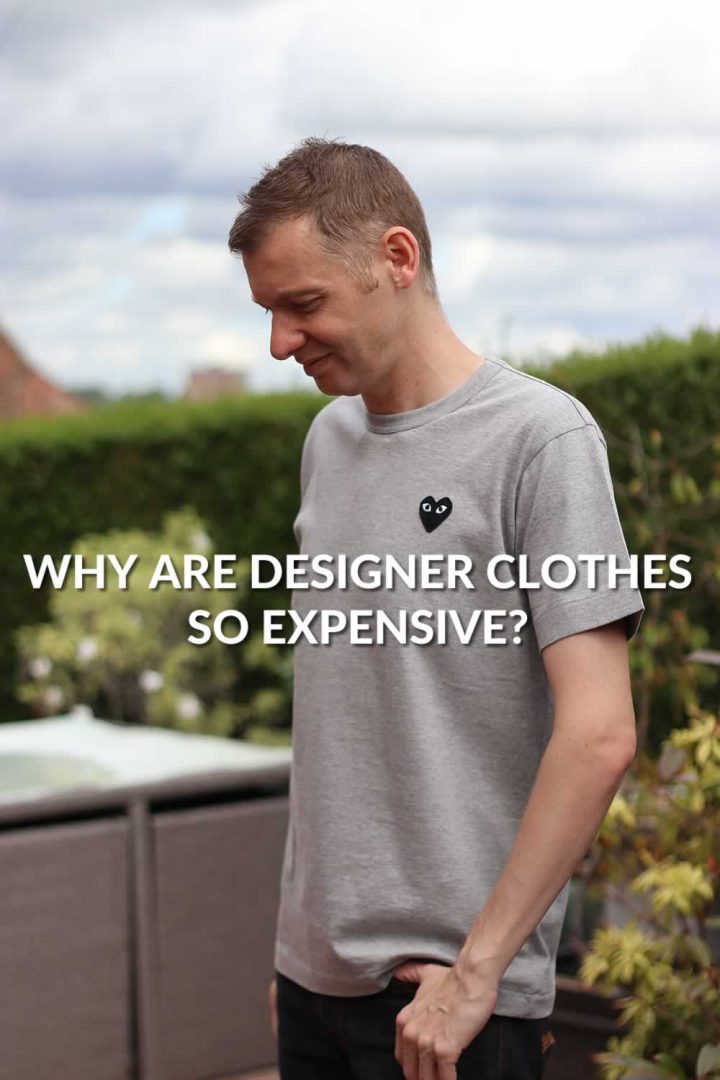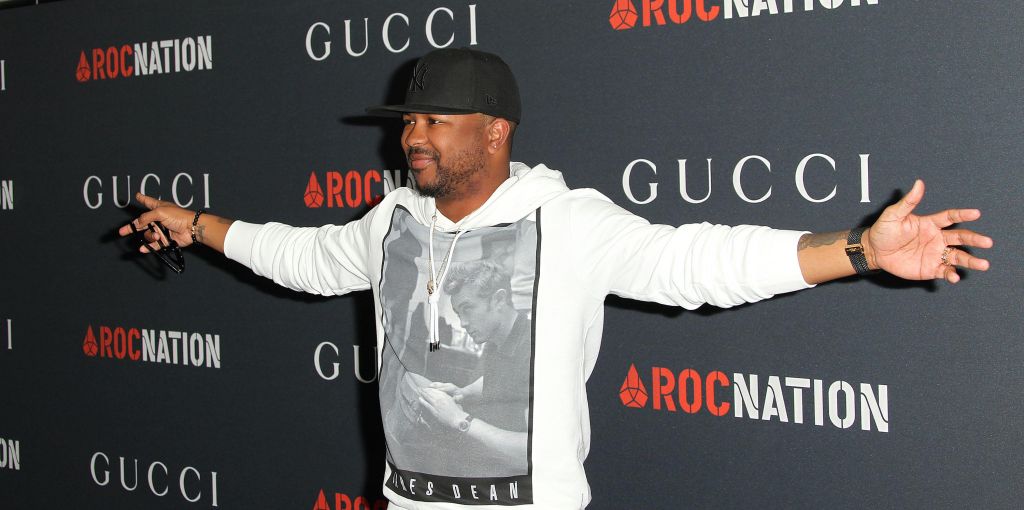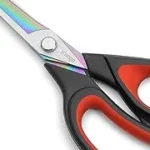Are you curious why designer clothes cost so much? Well, let’s dive into the fascinating world of fashion and explore why these trendy pieces come with a hefty price tag. We all know that designer clothes are undeniably stylish and often associated with luxury. But have you ever wondered what goes into making them so expensive? Hang on tight as we unravel the mystery behind the price of designer garments.
When it comes to designer clothes, it seems like the saying “you get what you pay for” holds true. From the finest fabrics to meticulous craftsmanship, these garments are crafted with utmost care and attention to detail. But there’s so much more to it than meets the eye. Join me on a journey to discover the secrets behind the soaring price tags and uncover the hidden costs that contribute to the allure of designer fashion.
In this article, we’ll explore the world of designer clothes and shed light on the factors that make them so expensive. From the premium materials used to the exclusivity of the brands, we’ll delve into the fascinating reasons why these fashion pieces command such high prices. Get ready to unravel the mysteries behind the world of designer clothes and gain a deeper understanding of why they are often considered the epitome of style and luxury.

Why Are Designer Clothes So Expensive?
Designer clothes have always been associated with premium quality, luxury, and high fashion. From the exquisite fabrics to the impeccable craftsmanship, there is an allure to owning and wearing designer pieces. However, with their hefty price tags, many people wonder why designer clothes are so expensive. In this article, we will delve into the various factors that contribute to the high cost of designer clothing and shed light on the intricate world of fashion economics.
The Brand and Its Prestige
One of the primary reasons why designer clothes are so expensive is the brand and its prestige. Established fashion houses with a rich heritage and reputation command higher prices due to their exclusivity and brand value. These legendary brands have invested heavily in building their image and luxury status over the years, which adds significant value to the products they offer. Consumers are willing to pay a premium to own a piece of the brand’s legacy and the status symbol that comes with it.
Moreover, the brand’s marketing and advertising efforts contribute to the overall cost of the clothing. Extensive campaigns, celebrity endorsements, fashion shows, and high-end store locations all incur significant expenses, which are ultimately reflected in the price of the garments. This level of brand exposure and promotion is essential for a designer label to maintain its position in the competitive fashion industry.
Additionally, luxury brands often use exclusive materials, such as rare fabrics, intricate embellishments, and unique prints, which further elevate the perceived value of their garments. These materials are carefully sourced and selected to ensure the utmost quality and craftsmanship, but they also come at a premium cost.
Quality and Craftsmanship
Designer clothes are renowned for their exceptional quality and craftsmanship. Attention to detail, meticulous tailoring, and skilled artisans contribute to the premium price tag attached to these garments. Each piece is made with the utmost care and precision, ensuring that every stitch, seam, and finishing is flawless.
The fabrics and materials used in designer clothing are often of superior quality. From luxurious silks to fine cashmere and premium leather, these materials are carefully chosen for their exceptional feel, durability, and aesthetic appeal. The designers collaborate with the finest mills and suppliers to source the best materials available. This commitment to quality adds to the expense of producing designer clothing.
The garments themselves are usually handcrafted or require a high level of manual labor. Skilled artisans, often working in specialized workshops, painstakingly bring the designer’s vision to life. From intricate beading and embroidery to complex draping and pattern cutting, the craftsmanship involved in creating designer garments is time-consuming and labor-intensive. The expertise and experience of these artisans contribute significantly to the overall cost of the clothing.
Research and Development
Designer brands invest heavily in research and development to stay at the forefront of fashion trends and innovation. They employ teams of designers, trend forecasters, and creative directors who work tirelessly to create unique and captivating collections. This research and development process requires resources, time, and expertise.
Designers attend fashion weeks and trade shows, visit fabric fairs, and conduct in-depth market research to understand the evolving tastes and preferences of their target audience. This ensures that their collections are current and in line with the latest trends. However, the costs associated with these activities, such as travel, prototyping, and sampling, contribute to the overall price of the clothes.
Furthermore, designer brands invest in cutting-edge technology and innovation to stay ahead of the competition. They leverage advancements in textile technology, 3D printing, and sustainable practices to create unique and sustainable garments. These investments in research and development, along with the cost of implementing new technologies, are reflected in the price of designer clothes.
The Exclusivity Factor
Exclusivity is a key element of the luxury fashion industry. Limited production runs and unique designs create an aura of exclusivity that drives up the price of designer clothing. Many designer brands deliberately limit the quantities of their products, making them highly sought-after and harder to obtain.
By creating a sense of scarcity, these brands are able to maintain high demand and command higher prices. Moreover, the limited availability of certain designs or collaborations with renowned artists or celebrities adds to the exclusivity factor, making the garments even more desirable.
It’s worth noting that the exclusivity factor extends to the shopping experience as well. Designer boutiques and flagship stores offer a curated and luxurious environment, providing a level of service and personal attention that is unmatched in other retail spaces. The attentive and knowledgeable staff, along with the elevated ambiance, contribute to the overall luxury experience for the customer.
The Cost of Ethical and Sustainable Practices
In recent years, there has been growing emphasis on ethical and sustainable practices in the fashion industry. Designer brands are increasingly adopting environmentally friendly approaches, such as using organic fabrics, reducing waste, and implementing fair labor practices.
While these initiatives are essential for the long-term viability of the fashion industry and the well-being of the planet, they come with additional costs. Organic materials and eco-friendly manufacturing processes often incur higher expenses compared to conventional methods. Fair labor practices ensure that the workers involved in producing designer clothing are paid fair wages and operate in safe working conditions, which further adds to the overall production costs.
Designer brands that prioritize sustainability and ethical practices make conscious decisions to invest in these initiatives, even if it means higher production costs. The commitment to these principles is reflected in the higher prices of their garments.
Conclusion
Designer clothes are expensive for a variety of reasons, including the brand’s prestige, the quality and craftsmanship of the garments, the investment in research and development, the exclusivity factor, and the costs associated with ethical and sustainable practices. Understanding these factors helps to unravel the mystery behind the price tags of designer clothing and gives us a deeper appreciation for the art and skill involved in creating these coveted pieces.
Key Takeaways: Why Are Designer Clothes So Expensive?
- Designer clothes are expensive because they are made with high-quality materials.
- Designers spend a lot of time and effort creating unique and fashionable designs.
- The manufacturing process of designer clothes is often more complex and labor-intensive.
- Branding and prestige play a significant role in the pricing of designer clothes.
- Expensive marketing and advertising campaigns also contribute to the high cost of designer clothes.
Frequently Asked Questions
Designer clothes often come with hefty price tags. Here are some commonly asked questions about why these garments tend to be so expensive.
What factors contribute to the high prices of designer clothes?
Several factors contribute to the high prices of designer clothes. First and foremost, designer brands invest a significant amount of time and effort into creating unique and original designs. This involves hiring skilled designers and investing in high-quality materials.
Additionally, designer brands often produce their clothing in limited quantities, creating a sense of exclusivity. The scarcity of these garments contributes to their high price. The cost of marketing and branding also adds to the overall expense, as luxury fashion brands invest in creating an image of prestige and desirability.
Are designer clothes made with better quality materials?
Designer clothes are often made with high-quality materials, which can justify their higher price point. Luxury fashion brands typically select premium fabrics that are known for their durability, comfort, and unique textures.
This dedication to quality extends beyond the materials themselves. Designer garments are often meticulously crafted and undergo strict quality control processes to ensure that every aspect of the clothing meets the brand’s high standards. In many cases, the craftsmanship and attention to detail are reflected in the final price of the item.
Why do designer clothes have limited availability?
Designer clothes are often produced in limited quantities to create a sense of exclusivity and scarcity. By restricting the availability of their garments, luxury brands aim to maintain a sense of prestige and desirability. This limited availability enhances the perception that designer clothes are rare and valuable.
Furthermore, producing smaller quantities allows brands to focus on maintaining high quality standards. By carefully controlling the production process, luxury brands can ensure that each garment meets their exact specifications. This level of control and attention to detail is often reflected in the price of the clothing.
How does branding and marketing affect the price of designer clothes?
Branding and marketing play a significant role in the pricing of designer clothes. Luxury fashion brands invest heavily in creating and maintaining a strong brand image, which involves expensive marketing campaigns, celebrity endorsements, and high-profile events.
These efforts contribute to the perception of exclusivity and desirability surrounding the brand. The cost of these marketing activities is factored into the overall price of the designer clothes. Customers not only pay for the quality and craftsmanship of the garments but also for the prestige associated with wearing a well-known luxury brand.
Are designer clothes worth the high price?
Whether designer clothes are worth the high price is subjective and depends on individual preferences and priorities. For some, owning designer clothes represents a status symbol and a way to express personal style. The attention to detail, craftsmanship, and exclusivity associated with these garments can be highly appealing.
On the other hand, for those who prioritize affordability or do not place a high value on designer brands, the high price may not be worth it. It is important to consider personal budgets, individual needs, and the value one places on luxury and exclusivity when deciding whether designer clothes are worth the investment.

This Is Why Luxury Designer Brands Are So Expensive
Summary
Designer clothes can be expensive for a few reasons. First, the brand name itself adds value, making them more desirable. Second, the materials used are often of high quality, and that comes with a higher price tag. Third, the design and craftsmanship that goes into creating these clothes takes a lot of time and skill. These factors contribute to the higher cost of designer clothes.
However, it’s important to remember that expensive clothes aren’t the only option. There are plenty of affordable and stylish clothes available that can make you look great without breaking the bank. Ultimately, it’s up to you to decide what you value and what you can afford when it comes to buying clothes.






